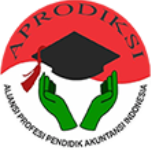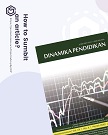The Impact of Think Pair Share and Two Stay Two Stray Learning Model Towards Learning Outcomes and Cooperation Ability
(1) Universitas Negeri Yogyakarta, Indonesia
(2) Universitas Negeri Yogyakarta, Indonesia
Abstract
This research aimed to find out the effectiveness of Think Pair Share (TPS) and Two Stay Two Stray (TSTS) methods in improving student learning outcomes and cooperation skills. The population in this research were all students of class X IPS SMA N 2 Banguntapan in the academic year 2016/2017 which consisted of 98 people, divided into four parallel classes. The sampling technique is cluster sampling to classify the students into three classes, divided in experiment class 1, experiment 2, and control class which determined randomly. The data collection methods used were documentation, test, and observation techniques. The research type is quasi experiment with pretest-posttest control group design. The analysis technique used was descriptive statistical analysis and Multivariate Analysis of Variances (MANOVA). The results showed that TPS and TSTS methods were proven to be more effective than conventional ones in improving students’ learning outcomes. Students who were taught by TPS and TSTS methods were also proven to have better collaborative skills than students taught by conventional methods.
Keywords
Full Text:
PDFReferences
Alpusari, M. & Putra, R. A. (2013). The Application of Cooperative Learning Think Pair Share (TPS) Model to Increase the Process Science Skill In Class IV Elementary School Number 81 Pekanbaru City. International Journal of Science and Research (IJSR) ISSN: 2319-7064.
Bamiro, Adekunle Oladipupo. (2015). Effects of Guided Discovery and Think-Pair-Share Strategies on Secondary School Students’ Achievement in Chemistry. Sage Open. 5(1), 1-7.
Barker, Jacqueline Grace (2012), Effect of instructional methodologies on student achievement modeling instruction vs. traditional instruction. LSU Master's Theses. 503
Dikici, A. (2006). The Effects of Cooperative Learning on The Abilities of Preservice Art Teacher Candidates to Lesson Planning in Turkey. Latin American Journal of Physics Education, 2: 96-108.
Gull, F. & Shehzad, S. (2015). Effects Of Cooperative Learning On Students Academic Achievement. Journal of Education and Learning Volum 9(3) pp. 246-255. Pakistan: Govt. College University.
Hamdayana, J. (2014). Model dan Metode Pembelajaran Kreatif dan Berkarakter. Jakarta: Ghalia Indonesia.
Huda, M. (2014). Cooperative Learning Metode, Teknik, Struktur, dan Model Penerapan. Yogyakarta: Pustaka Pelajar.
Ibrahim, M. dkk. (2000). Pembelajaran Kooperatif. Dikutip dari http://one.indoskripsi.com/skripsi/penerapan-pembelajaran-kooperatif-tipe-think-pair-share.html pada tanggal 15 Desember 2016
Indriyani. Cici. (2011). Peningkatan Kualitas Pembelajaran IPS dengan Model Pembelajaran Kooperatif Teknik Two Stay-Two Stray Pada Siswa Kelas IV SD Tambakaji 05 Kecamatan Ngaliyan Kota Semarang. Kreatif: Jurnal Kependidikan Dasar. 1(2), 180-193.
Isjoni, T. R. (2009). Memicu Perbaikan Pendidikan Melalui Kurikulum dalam Kerangka Pikir Desentralisasi. Makalah Seminar tema “Qou Vadis Pendidikan Indonesiaâ€. Yogyakarta: Kanisius.
Ismawati, N. & Hindarto, N. (2011). Penerapan Model Pembelajaran Kooperatif dengan Pendekatan Struktural Two Stay Two Stray untuk Meningkatkan Hasil Belajar Siswa Kelas X SMA. Jurnal Pendidikan Fisika Indonesia, 7, 38-41.
Kristiyanti, dkk. (2015). Studi Komparasi Model Pembelajaran Kooperatif TPS dan TGT untuk Meningkatkan Prestasi Belajar Siswa pada Pokok Bahasan Hidrokarbon di Kelas X SMA Negeri 1 Rambah Rokan Hulu. Jurnal Online Mahasiswa (JOM) Bidang Keguruan dan Ilmu Pengetahuan Volum 3 Nomor 1. Riau: Universitas Riau.
Lie, A. (2008). Cooperative Learning: Mempraktikkan Cooperative Learning di Ruang-Ruang Kelas. Jakarta: PT Gramedia Widiasarana Indonesia.
Listianah, Harnanik, & Hadi, Syamsu. (2013). Meningkatkan Hasil Belajar Mata Pelajaran Ekonomi Melalui Perpaduan Metode Ceramah dan Metode Two Stay Two Stray pada Kelas X Ap SMK Hidayah Semarang. Economic Education Analysis Journal. 2(1). 24-28.
Majid, A. (2013). Strategi Pembelajaran. Bandung: Remaja Rosdakarya.
Mulyani, S., & Sofiani, A. (2016). Improving the Skills of Demand Function Counting and Demand Curve Drawing Using Drill Method and Think Pair Share (TPS). Dinamika Pendidikan, 11(2), 108-116.
Nurnawati, dkk. (2012). Peningkatan Kerjasama Siswa SMP Melalui Penerapan Pembelajaran Kooperatif Pendekatan Think Pair Share. Unnes Physics Education Journal 1 (1).
Raga, G. (2014). Pengaruh Model Pembelajaran TS-TS Terhadap Hasil Belajar IPA Siswa Kelas V SD di Desa Kaliasem Kecamatan Banjar Kabupaten Buleleng. Skripsi. Universitas Pendidikan Ganesha.
Ratri, T. D. W. (2013). Keefektifan Model Pembelajaran Kooperatif dengan Teknik Think Pair Share (TPS) dalam Meningkatkan Keaktifan dan Hasil Belajar Ekonomi Siswa Kelas X SMA Negeri 1 Prambanan Kabupaten Sleman. Skripsi. Universitas Negeri Yogyakarta.
Republika. (2016). Indonesia Perlu Tingkatkan Kualitas Sumber Daya Manusia. Republika Online. 7 Januari 2016. http://republika.co.id/berita/nasional/umum/16/01/07/. Diakses 30 Januari 2016.
Rochmad. & Sugiharti, E. (2015). TPS Application Based On Mouse Mischief Improving The Ability To Solve Mathematics Problem For Senior High School Students In Temanggung-Indonesia. International Journal of Education and Research, Vol. 3 No. 3.
Rustiana, S. (2017). Pengaruh Model Pembelajaran Two Stay Two Stray dan Model Broken Traingle terhadap Peningkatan Keterampilan Sosial Peserta Didik pada Mata Pelajaran Fiqih di MTS Safinatun Najah Tunjungan Blora Tahun Pelajaran 2016/2017. Skripsi. Sekolah Tinggi Agama Islam Negeri Kudus.
Sampsel, Ariana. (2013). Finding the Effects of Think-Pair-Share on Student Confidence and Participation. Honors Projects. 28
Siarukin, R. Y. (2011). Penerapan Model Pembelajaran Think-Pair-Share untuk Meningkatkan Hasil Belajar Siswa Kelas V Mata Pelajaran IPS di SDN Klojen Kota Malang. Tesis. Universitas Negeri Malang.
Slavin, E. R. (2009). Cooperative Learning Teori, Riset dan Praktik. Bandung: Nusamedia.
Subagya & Susiati. (2017). Application of Accounting Scaffolding Learning Using Fingertips to Increase Learning Result. Dinamika Pendidikan, 12(1), 1-12.
Sugiarto, Dino & Sumarsono, Puji. (2014). The Implementation of Think-Pair-Share Model to Improve Students’ Ability in Reading Narrative Texts. International Journal of English and Education, 3(3), 206-215.
Sulisworo, D. & Suryani, F. (2014). The Effect of Cooperative Learning, Motivation and Information Technology Literacy to Achievement. International Journal of Learning and Development, 4(2), 58-64.
Sumadji. (2015). Pengaruh Model Pembelajaran Terhadap Hasil Belajar Mahasiswa. Jurnal Inspirasi Pendidikan Volum 5 Nomor 2.
Suprijono, A. (2015). Cooperative Learning Teori dan Aplikasi PAIKEM (revisi). Yogyakarta: Pustaka Pelajar.
Sutrisno, V. L. P. & Siswanto, B. T. (2016). Faktor-Faktor yang Mempengaruhi Hasil Belajar Siswa pada Mata Pelajaran Praktik Kelistrikan Otomotif SMK di Kota Yogyakarta. Jurnal Pendidikan Vokasi. 6(1), 111-120.
Tran, V. D. (2014). The Effects of Cooperative Learning on The Academic Achievement And Knowledge Retention. International Journal of Higher Education, 3(2). Vietnam: An Giang University.
Trianto. (2007). Model-Model Pembelajaran Inovatif Berorientasi Konstruktivistik. Jakarta: Prestasi Pustaka.
Refbacks
- There are currently no refbacks.

This work is licensed under a Creative Commons Attribution 4.0 International License.

.png)

.png)





